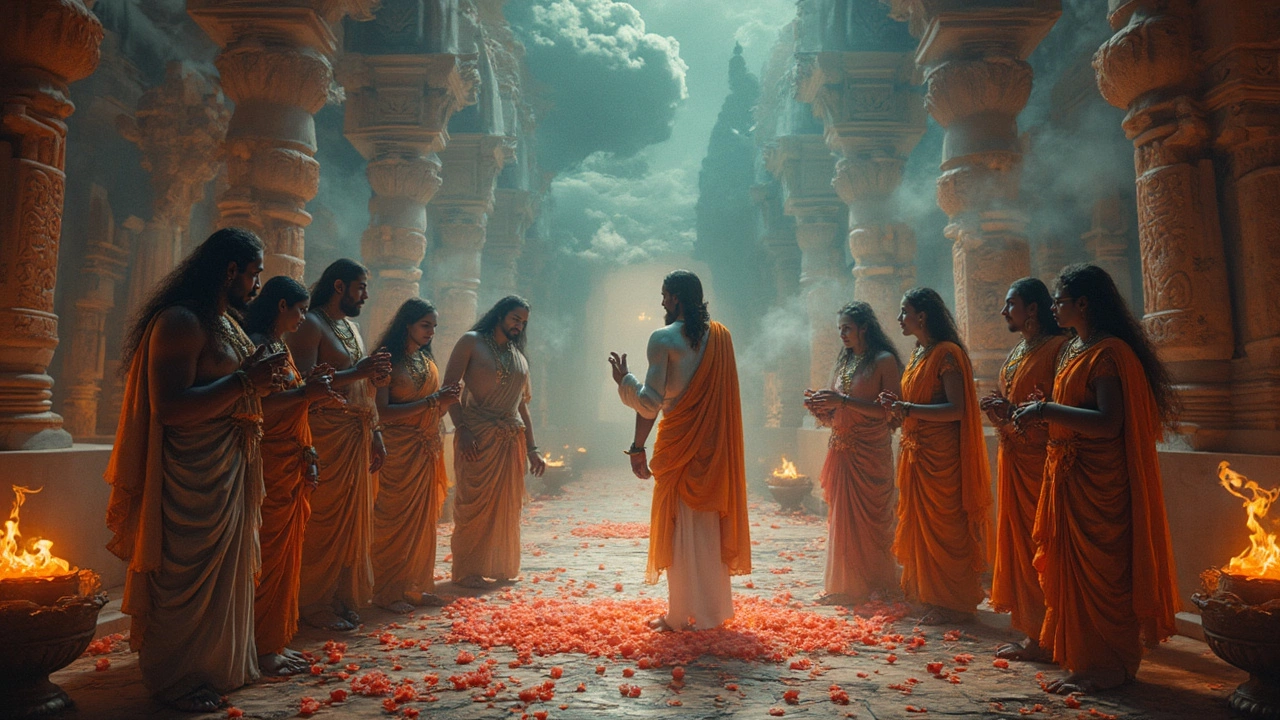Beliefs in Tamil Culture: Core Traditions, Myths, and Spiritual Practices
At the heart of Tamil life are beliefs, deeply held convictions about the divine, nature, and human purpose that guide daily actions, rituals, and community life. These aren’t abstract ideas—they’re lived every day in temple offerings, folk dances, and the way families greet the new moon. Unlike rigid doctrines, Tamil beliefs are woven into routines: lighting a lamp before sunrise, tying a thread around the wrist for protection, or whispering prayers while cooking. This isn’t religion as a set of rules—it’s religion as rhythm.
These beliefs draw from a mix of ancient Hindu traditions, local folk spirits, and centuries of oral storytelling. For example, the blue skin of gods like Krishna and Shiva, a visual symbol of infinite power and cosmic presence in Indian art isn’t just artistic choice—it’s a reminder that divinity transcends human form. Similarly, the Jalpari, a water spirit from Tamil and broader Indian folklore, often mistaken for a mermaid, shows how nature is seen as alive, sacred, and full of unseen guardians. These aren’t myths from old books—they’re still whispered about in villages near rivers and lakes.
Beliefs also shape how people interact with health, food, and even music. The use of Ayurveda, a traditional system of medicine rooted in balancing body energies isn’t just about herbs—it’s tied to the belief that illness comes from disharmony, not just germs. Even something as simple as giving sweets during Diwali isn’t just tradition—it’s a belief that sweetness invites prosperity. And when people sing nonsense syllables in folk music—called bol banao—it’s not random. It’s a spiritual rhythm, meant to connect the singer to ancestors and the earth.
These beliefs aren’t static. They adapt. Tamil communities in Sri Lanka, Singapore, or Toronto still light oil lamps on Karthigai Deepam, even if they live in high-rise apartments. The core hasn’t changed—what’s changed is the setting. What ties them all together is a quiet certainty: the unseen is real, the past is present, and every action carries meaning.
Below, you’ll find real stories that unpack these beliefs—not as academic theories, but as lived truths. From why the Catholic Church questions yoga to how Tamil people celebrate Diwali differently than others, each article reveals how belief shapes behavior, identity, and community. There’s no fluff here. Just clear, grounded insights into what people in Tamil society truly hold sacred.
